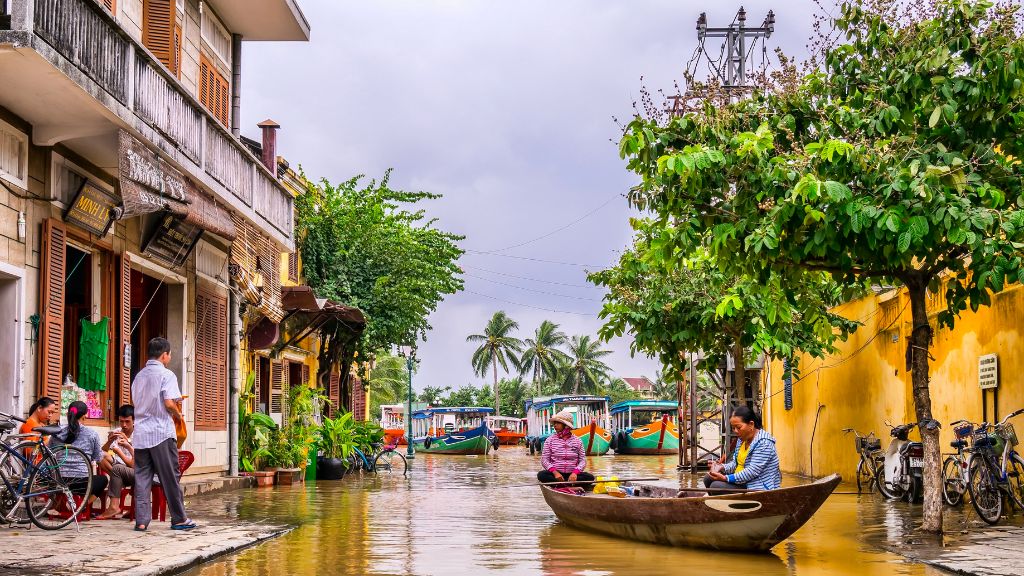Can Covid-19 point to a new normal for innovation in Vietnam?
By Caitlin Wiesen, Ida Uusikyla and Phan Hoang Lan
UNDP Vietnam Resident Representative and innovation experts discuss how 'emergency innovation' contributed to the country's successful pandemic response.

The shared goal of overcoming COVID-19 has resulted in an avalanche of innovation of all shapes and sizes to respond to the impacts of the pandemic in Vietnam, from nationally produced test kits and masks during global stockouts to rice ATM’s and respirators.
Moreover, the pandemic has resulted in new dynamics between different actors from government, businesses and citizens, as well as new mechanisms for coordination and collaboration within the Government, which especially in the innovation policy space has been one of the longstanding challenges.
From this experience, three questions arise: How can these newly surfaced mechanisms of governance and COVID innovation be sustained and help drive recovery in a co-existing with COVID reality? How to ensure that the recovery is not built around single-point solutions but rather a portfolio of interventions for systemic impact? And, how to use the momentum to accelerate Vietnam’s transition to more sustainable and inclusive trajectory?
Inclusive innovation
Supporting these efforts and building on the regional UNDP-NESTA study Strategies for Supporting Inclusive Innovation, from across ASEAN countries, UNDP Vietnam embarked on a journey to unpack what inclusive innovation means for the Science, Technology and Innovation (STI) Policy in Vietnam convening policymakers across the board around the same table.
The study on Vietnam’s Inclusive Innovation Policy seeks to broaden the way in which innovation is framed to include more segments of society in the innovation narrative and promote new drivers for sustainable growth based on new forms of value creation.
The study findings were discussed in Ha Noi 3 July with the Central Institute of Economic Management (CIEM) under the Ministry of Planning and Investment, policymakers from different Ministries, NGOs and business representatives.
The workshop discussed how inclusive innovation policy should be further mainstreamed in the context of the next Socio-Economic Development Strategy 2021-25 and uncovered how the ‘entrepreneurship’ of the Government can also help innovators fast track pre-commercialization and commercialization of research and development (R&D) results.
The policymakers and participants agreed and emphasized in the workshop that to achieve this, “we need new policymaking and management in the new normal” including stronger streamlined implementation and less cumbersome government processes.
Public-private sector collaboration
These were demonstrated by the COVID-19, which uncovered three interesting trends for inclusive innovation. Firstly, the government demonstrated agility and innovation amidst the crisis through creating new partnerships and leveraging social networks.
Furthermore, it demonstrated that the government, united by a shared mission and encouraged to think outside of the box in a crisis, can gather policymakers from across ministries around the same table, build multiple partnerships, including between the government and the private sector as well as academia, which have contributed to a successful COVID response.

Business agility
Secondly, many businesses in Vietnam shifted their business models to serve market demand during and after the lockdown. From textile to logistics companies, enterprises in Vietnam have adapted to changed circumstances by trying to sustain their business. Attempting to avoid what seemed like an inevitable bust caused by change in global demand, many Vietnamese companies have been able to flip the coin to their advantage.

Ground-up innovation
Finally, the COVID-19 outbreak unleashed the creativity of people, spurring new types of grassroots and social innovations. It emphasizes the need for whole-of-society approaches in emergencies and has demonstrated how the creativity of people can be harnessed to address commonly shared societal challenges.

What will this mean for the future?
These examples of ‘emergency innovations’ by the government, businesses and the people have been catalysed by the pandemic. However, the same leadership and innovation that has helped Vietnam so successfully contain the pandemic, is needed now to re-stimulate the economy and allow the creative forces of the government, business and people to happen in a way that ensures that decades of development will not be reversed and those most vulnerable are not left behind.
Therefore, in order to sustain this momentum and capitalize on the lessons from the COVID response to help move inclusive innovation from theory to implementation, it is paramount to:
- Assess the mechanisms of the ‘entrepreneurial emergency state’ that overcame bottlenecks in implementation and existing regulations during the COVID-19 pandemic to facilitate inclusive innovation among the above highlighted three groups in the recovery phase;
- Create exploratory environments and geographical decentralized areas for testing new policies and regulations as well as exploring de-regulation to facilitate ‘Triple A Governance’ that is Anticipatory, Adaptive and Agile to manage new volumes of uncertainty;
- Establish inclusive innovation intermediaries - institutions which could help to encourage collaboration, and knowledge transfer, across innovation ecosystem players such as the government, large enterprises, research institutes, grassroots innovators and SMEs as the drivers of inclusive recovery.
The government needs to find ways to see beyond the ‘pressures of the present’ and find ways to anticipate future risks and embed innovation and resilience into building forward better.
The newly surfaced dynamics outlined above are critical for driving the recovery in the current ‘co-existing with COVID -reality’ and if institutionalised and enforced, can point to a new normal for innovation in Vietnam where no one is left behind.
This article was written by Caitlin Wiesen, UNDP Resident Representative in Vietnam; Ida Uusikyla, UNDP Innovation Officer; and Phan Hoang Lan, UNDP Head of Exploration.